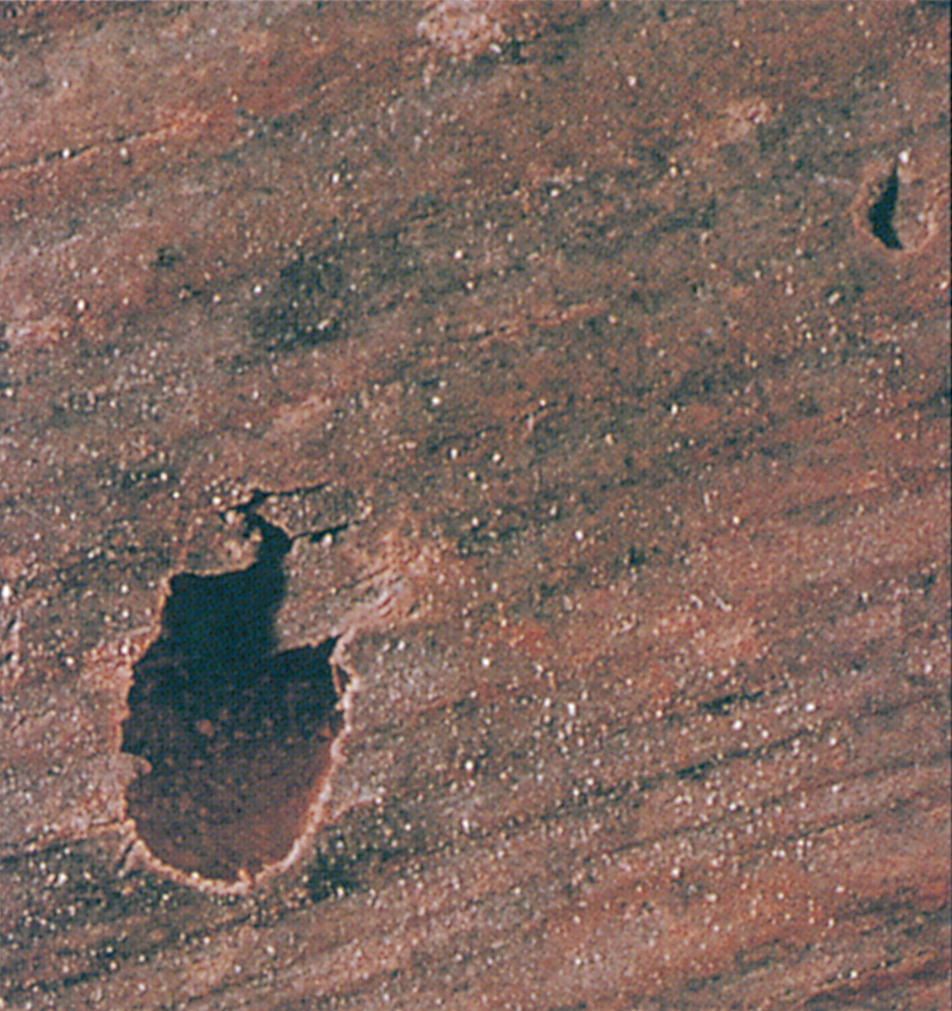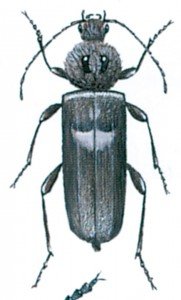(Latin: Hylotrupes bajulus)

From the economic standpoint this beetle is one of the most important pests of structural timber, but it is not widespread in Britain. In the wild the larvae live in old and completely dry coniferous trees. The adult beetle, which is only rarely seen, emerges in lofts in the warmest part of the summer, mates, and the female starts to lay eggs. She may produce up to 400 eggs and with the help of the very long, flexible ovipositor these can be deposited deep down in cracks and crevices in the tree.
The eggs hatch in about 14 days and the larvae bore straight into the wood where they continue to feed for the next couple of years. The actual period of development and the final size of the larva depend upon the temperature and the nutritional content of the timber. The average length of the larval life is probably about 3-4 years, but it can be much longer. The larva feeds mainly on the sapwood and often gnaws outwards towards the surface until only a thin papery layer separates it from the outside world.

When fully grown it pupates in a special pupal chamber which is sealed with coarse chips, but just before doing this it gnaws an exit-hole through which it will later leave the tree as a beetle (p. 118). The exit-hole, the wood dust and the chips which the larvae often push out are usually the first visible evidence of an attack by this beetle, although the actual infestation may have taken place several years before. However it is possible to listen for evidence before the attack has got as far as this. By standing quietly in a loft on a warm summer day it is possible to hear quite distinctly the rasping sound made by the larger larvae as they gnaw (see also p. 214).
This beetle is now thought to be established in the southern parts of England, but it is rarely seen in woodland, which is not surprising as it does not attack green timber.
The temperature must be at least 25° C before the adults become active, so in northern Europe it is only in some years that they actively disperse by flying from buildings already infested. There is little doubt that the dispersal of this beetle is mainly effected by man himself. Sometimes the timber may become infected in the merchant’s yard before it reaches the builder, or infection may spread from boxes or furniture which have previously been stored in an infected loft.
This species occurs primarily in roof timber, because this is where it finds the high temperatures that it requires, but it can easily spread to other timber in the house





